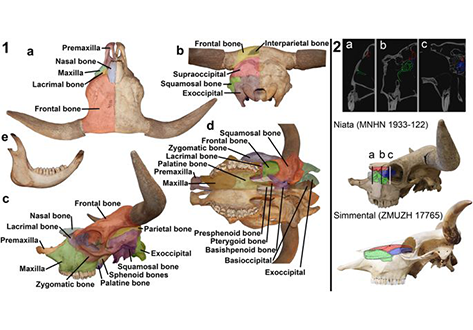Thermo Fisher Scientific › Electron Microscopy › Electron Microscopes › 3D Visualization, Analysis and EM Software › Use Case Gallery

The Niata was a cattle variety from South America that figured prominently in writings on evolution by Charles Darwin. Its shortened head and other aspects of its unusual morphology have been subject of unsettled discussions since Darwin’s time. Here, we examine the anatomy, cranial shape, skull biomechanics, and population genetics of the Niata. Our results show that the Niata was a viable variety of cattle and exhibited anatomical differences to known chondrodysplastic forms. In cranial shape and genetic analysis, the Niata occupies an isolated position clearly separated from other cattle. Computational biomechanical model comparison reveals that the shorter face of the Niata resulted in a restricted distribution and lower magnitude of stress during biting. Morphological and genetic data illustrate the acquisition of novelty in the domestication process and confirm the distinct nature of the Niata cattle, validating Darwin’s view that it was a true breed.
We used a μCT scan to assess the configuration of the nasal conches (supplementary information); manual segmentation of the nasal conchae was performed in Avizo 8.1.
For Research Use Only. Not for use in diagnostic procedures.